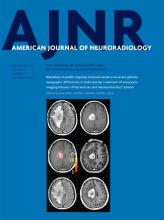Abstract
BACKGROUND AND PURPOSE: Comparing outcomes between endovascular aneurysm coiling trials can be difficult because of heterogeneity in patients and end points. We sought to understand the impact of geography on aneurysm retreatment in patients enrolled in the Matrix and Platinum Science Trial.
MATERIALS AND METHODS: Post hoc analysis was performed on data from the Matrix and Platinum Science trial. Patients were stratified as either North American or international. Baseline patient demographics, comorbidities, aneurysm characteristics, procedural complications, and clinical and angiographic outcomes were compared.
RESULTS: We evaluated 407 patients from 28 North American sites and 219 patients from 15 international sites. Patient demographics differed significantly between North American and international sites. Aneurysms were well occluded postprocedure more often at international than North American sites (P < .001). Stents were used significantly more often at North American sites (32.7% [133 of 407]) compared with international sites (10.0% [22 of 219]; P < .001). At 455 days, there was no difference in the proportion of patients alive and free of disability (P = .56) or with residual aneurysm filling (P = .10). Ruptured aneurysms were significantly more likely to have been retreated at North American sites within the first year (P < .001) and at 2 years (P < .001). Among all patients for whom the treating physician believed there to be Raymond 3 aneurysm filling at follow-up, absolute rates of retreatment at international and North American sites were similar by 2-year follow-up.
CONCLUSIONS: Data from the Matrix and Platinum Science Trial demonstrate that aneurysm retreatment occurs with different frequency and at different times in different regions of the world. This trend has critical value when interpreting trials reporting short-term outcomes, especially when judgment-based metrics such as retreatment are primary end points that may or may not take place within the defined study follow-up period. Though these variations can be controlled for and balanced within a given randomized trial, such differences in practice patterns must be accounted for in any attempt to compare outcomes between different trials. Despite these differences, endovascular-treated intracranial aneurysms around the world have similar clinical outcomes.
- © 2016 by American Journal of Neuroradiology












